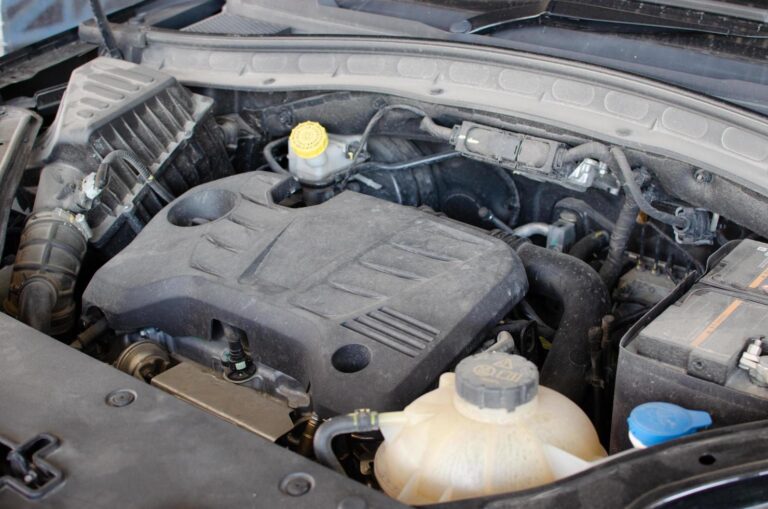Driving a manual car can initially seem hard, but mastering this skill offers numerous benefits. From better control and fuel efficiency to an enhanced driving experience, learning to drive a manual car can make you a more engaged and competent driver.
Statistics on Manual vs. Automatic Cars: In recent years, manual transmissions have become common but still hold an important place in the automotive world. For example, only about 13% of new cars sold in the U.S. come with manual transmissions.
Fuel Efficiency: Manual cars often achieve better fuel efficiency. Studies show that manual transmission will improve fuel economy by 5-15% compared to automatic transmission.
Control and Engagement: Car enthusiasts praise manual transmissions for superior power and engagement. As automotive journalist Jason Cammisa notes, “Driving a stick shift connects you more with the car and the road”
In this article
- 1 Understanding the Basics
- 2 Preparing to Drive
- 3 Starting the Car
- 4 Getting Familiar with Gears
- 5 Moving Off and Stopping
- 6 Changing Gears
- 7 Advanced Driving Techniques
- 8 Common Mistakes and Tips
- 9 Handling Specific Driving Situations
- 10 Advantages of Manual Transmissions
- 11 Maintenance Tips for Manual Cars
- 12 Conclusion
Understanding the Basics

Before you start driving a manual car, it’s fundamental to familiarize yourself with its key components and how they work together to operate the vehicle. Understanding these fundamentals will help make driving the car simpler.
Key Components of a Manual Car
1. The Shifter:
- Description: The shifter, or gear stick, is used to change gears. It typically has a diagram on top showing the gear positions, including first through sixth gear and reverse.
- Function: Moving the shifter changes the gears in the transmission, which adjusts the vehicle’s speed and power.
2. The Clutch Pedal:
- Description: The clutch pedal is located to the left of the brake pedal. It disengages the engine from the drivetrain, allowing you to change gears.
- Function: Pressing the clutch pedal disconnects the engine’s power from the wheels, enabling smooth gear shifts without damaging the transmission.
3. The Parking Brake:
- Description: The parking, handbrake, or emergency brake, is usually a lever between the front seats or a pedal near the driver’s footrest.
- Function: The parking brake keeps the car stationary, especially on inclines, preventing it from rolling.
Preparing to Drive
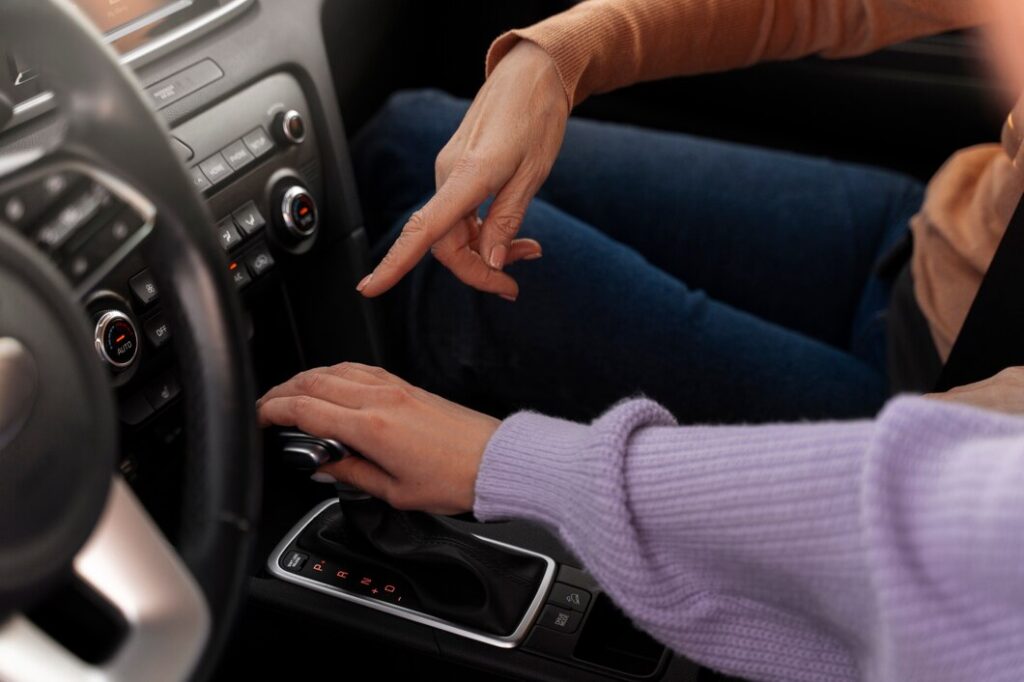
Proper preparation before driving a manual car is essential to ensuring safety and comfort. This section outlines the key steps to get you ready for a smooth and controlled driving experience.
Pre-drive Checklist
Before you begin driving, you must go through a pre-drive checklist to ensure everything is set up correctly. This will help you avoid distractions and ensure you’re in a good position to operate the vehicle safely.
1. Adjust the Seat:
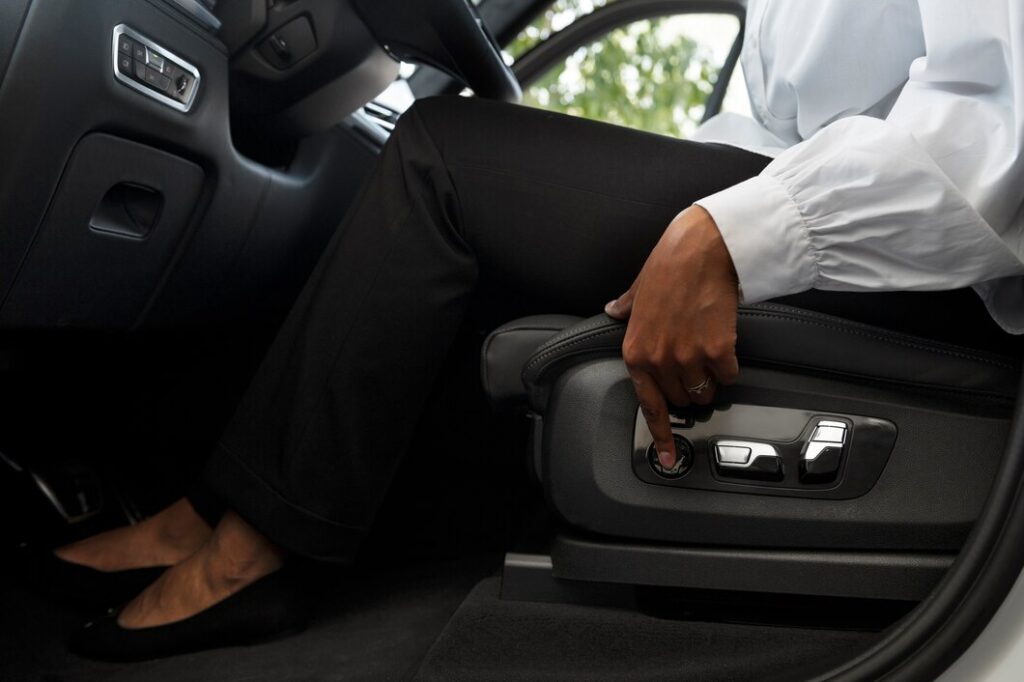
- Why It Matters: Proper seat adjustment is crucial for reaching the pedals comfortably and having a clear view of the road.
- How to Do It: Adjust the seat so you can fully press the clutch pedal to the floor without straining. Your knees should be slightly bent, and your arms should be comfortably bent when holding the steering wheel.
2. Adjust the Mirrors:
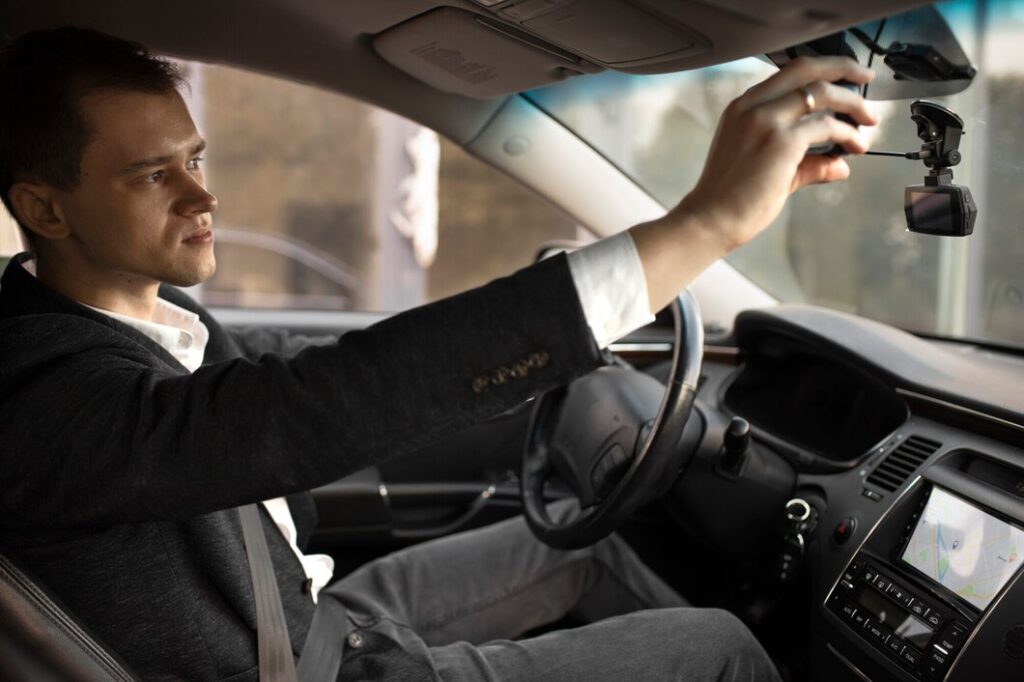
- Why It Matters: Properly adjusted mirrors ensure maximum visibility and help eliminate blind spots.
- How to Do It:
- Rearview Mirror: Adjust so you can see directly out of the rear window.
- Side Mirrors: Adjust so you can see the sides of your car and the lanes next to you. The horizon should be in the middle of the mirror.
3. Familiarize Yourself with Dashboard Controls:
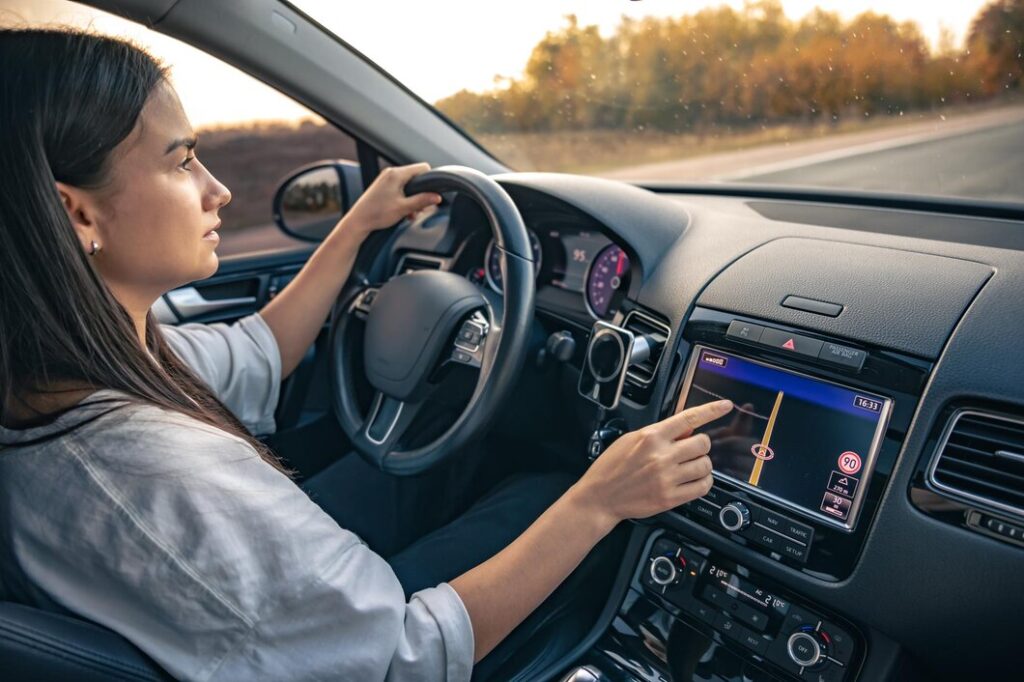
- Why It Matters: Knowing where the controls are and how they work will help you stay focused on the road.
- How to Do It: Take a moment to locate and understand the function of each control, including:
- Lights: Headlights, turn signals, and hazard lights.
- Windshield Wipers: Knowing how to operate them is essential for driving in different weather conditions.
- Climate Control: Adjust the temperature for comfort.
4. Ensure the Parking Brake is Engaged:
- Why It Matters: Ensuring the parking brake is engaged prevents the car from rolling when you start the engine.
- How to Do It: Check the parking brake lever or pedal to make sure it is fully engaged. If it’s a lever, pull it up; if it’s a pedal, press it down.
Starting the Car
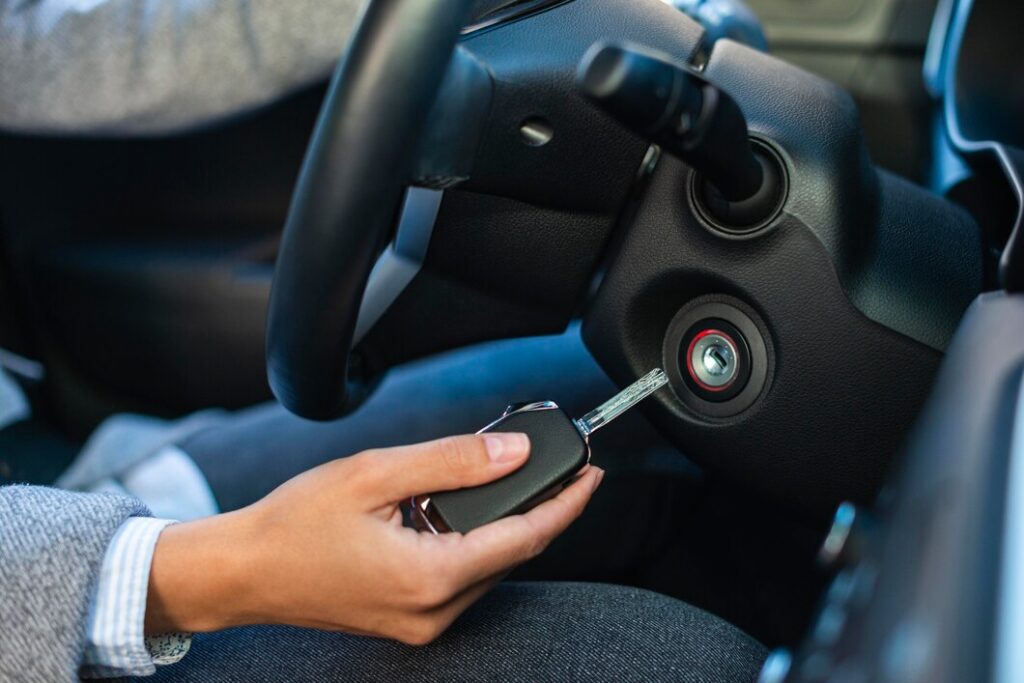
Starting a manual car requires a few specific steps to ensure the engine starts smoothly and safely. This section will guide you through the process step by step, addressing common issues beginners might face and providing tips to overcome them.
Step-by-Step Instructions
1. Engage the Clutch:
- Why It Matters: Pressing the clutch pedal disengages the engine from the wheels, allowing the car to start without any unintended movement.
- How to Do It: Sit in the driver’s seat and press the clutch pedal to the floor with your left foot. This ensures the engine is not connected to the drivetrain.
2. Check the Gear Position:
- Why It Matters: Ensuring the car is in neutral prevents the car from lurching forward or backward when the engine starts.
- How to Do It: Move the shifter to the neutral position. In neutral, the shifter should move freely from side to side. If the car is not in neutral, shift to neutral while keeping the clutch pedal pressed.
3. Insert the Key and Turn the Ignition:
- Why It Matters: This step starts the engine, making the car ready to drive.
- How to Do It: While holding the clutch pedal down, insert the key into the ignition and turn it to the “Start” position. Once the engine starts, release the key, allowing it to return to the “On” position. Keep the clutch pedal pressed until the engine is idling smoothly.
4. Check the Dashboard Indicators:
- Why It Matters: Ensuring all systems are functioning properly before you start driving is crucial for safety.
- How to Do It: Look at the dashboard to check for any warning lights. Ensure the oil pressure, engine temperature, and battery indicators show normal readings.
5. Release the Parking Brake:
- Why It Matters: The parking brake must be released to allow the car to move.
- How to Do It: Depending on your car, either press the button on the handbrake lever and lower it or press down on the parking brake pedal. Ensure the brake warning light on the dashboard turns off.
Getting Familiar with Gears
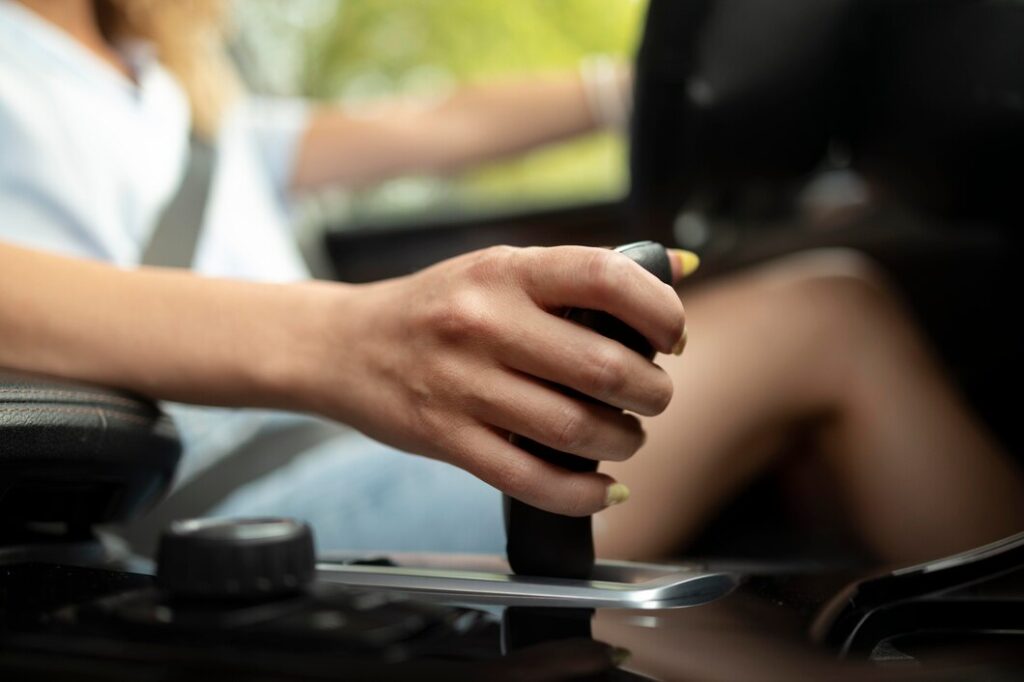
Understanding how to use the gears in a manual car is crucial for a smooth driving experience. This section will explain gear positions, how to transition between gears smoothly, and how to listen to the engine for cues on when to shift.
Gear Positions
1. Gear Layout:
- Typical Layout: Most manual cars have a standard H-pattern layout. This can vary slightly depending on the make and model, but typically:
- 1st Gear: Upper left
- 2nd Gear: Lower left
- 3rd Gear: Upper middle
- 4th Gear: Lower middle
- 5th Gear: Upper right (if applicable)
- 6th Gear: Lower right (if applicable)
- Reverse Gear: Often located at the far right or far left, sometimes with a locking mechanism or collar to prevent accidental shifts
2. Gear Diagrams:
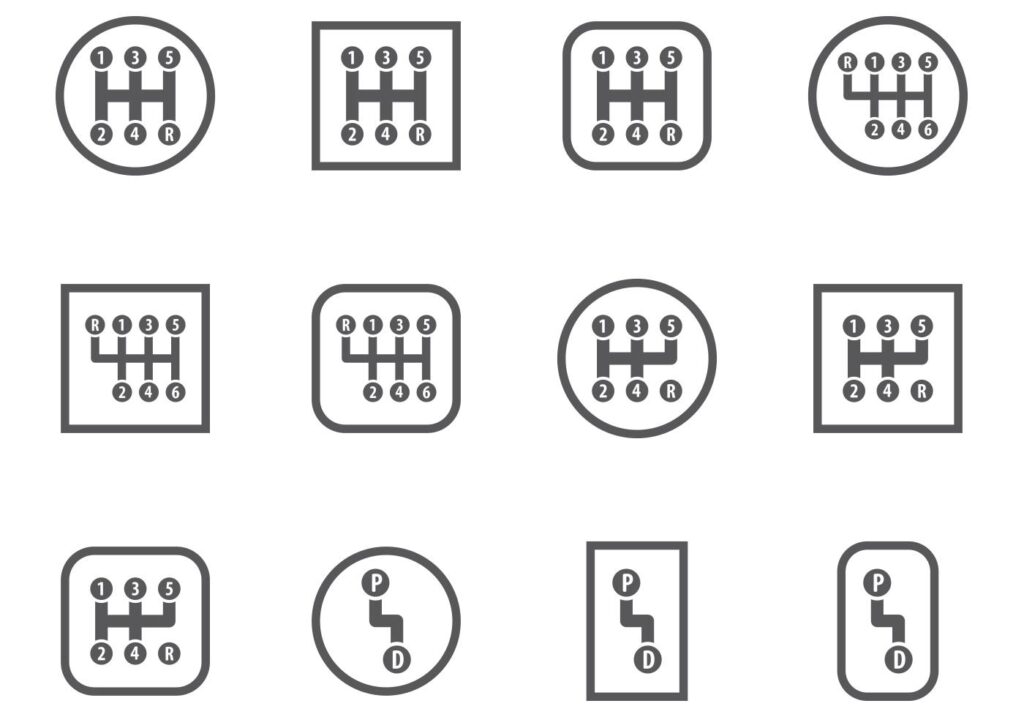
Moving Off and Stopping
Mastering the basics of moving off and stopping is essential for driving a manual car smoothly and safely. This section will guide you through the steps to achieve smooth starts and controlled stops, including key techniques for clutch control and effective braking.
Moving Off
1. Clutch Control for Smooth Starts:
- Why It Matters: Smooth starts prevent the car from stalling and ensure a comfortable ride.
- How to Do It:
- Press the Clutch Pedal: Fully depress the clutch pedal with your left foot.
- Shift to First Gear: Move the shifter into the first gear position.
- Release the Parking Brake: Ensure the parking brake is disengaged.
- Gradually Release the Clutch Pedal: Slowly lift your left foot off the clutch pedal until you feel the car start to move (the bite point).
- Add Gas: As you release the clutch, gently press the accelerator with your right foot to increase engine RPMs and provide power to the wheels.
- Fully Release the Clutch: Once the car is moving, continue to slowly release the clutch pedal completely.
2. Using the Gas Pedal:
- Why It Matters: Proper use of the gas pedal ensures the car accelerates smoothly without stalling.
- How to Do It: Apply steady pressure on the gas pedal as you release the clutch to maintain a smooth and controlled acceleration.
3. Avoiding Common Mistakes:
- Stalling: Caused by releasing the clutch too quickly without enough gas. To avoid this, practice coordinating the clutch and gas pedals.
- Jerky Starts: Often due to abrupt clutch release or excessive throttle. Aim for gradual and smooth pedal movements.
Stopping the Car
1. Using the Clutch and Brake Together:
- Why It Matters: Coordinating the clutch and brake pedals ensures a smooth stop and prevents stalling.
- How to Do It:
- Press the Clutch Pedal: As you approach a stop, press the clutch pedal to the floor to disengage the engine.
- Apply the Brake: Use the brake pedal to slow down and bring the car to a stop. Apply steady and controlled pressure.
- Shift to Neutral: Once stopped, shift the gear lever to neutral and release the clutch pedal.
2. Techniques for Different Stopping Situations:
- Normal Stops: Gradually press the brake pedal while pressing the clutch pedal to disengage the engine, then shift to neutral.
- Emergency Stops: Apply maximum brake pressure without locking the wheels (if the car lacks ABS) while pressing the clutch pedal to disengage the engine. This helps prevent stalling and maintains control.
3. Using the Parking Brake:
- Why It Matters: The parking brake prevents the car from rolling when parked, especially on inclines.
- How to Do It: Once stopped, engage the parking brake by pulling the lever up or pressing the pedal down. This secures the car in place.
Changing Gears
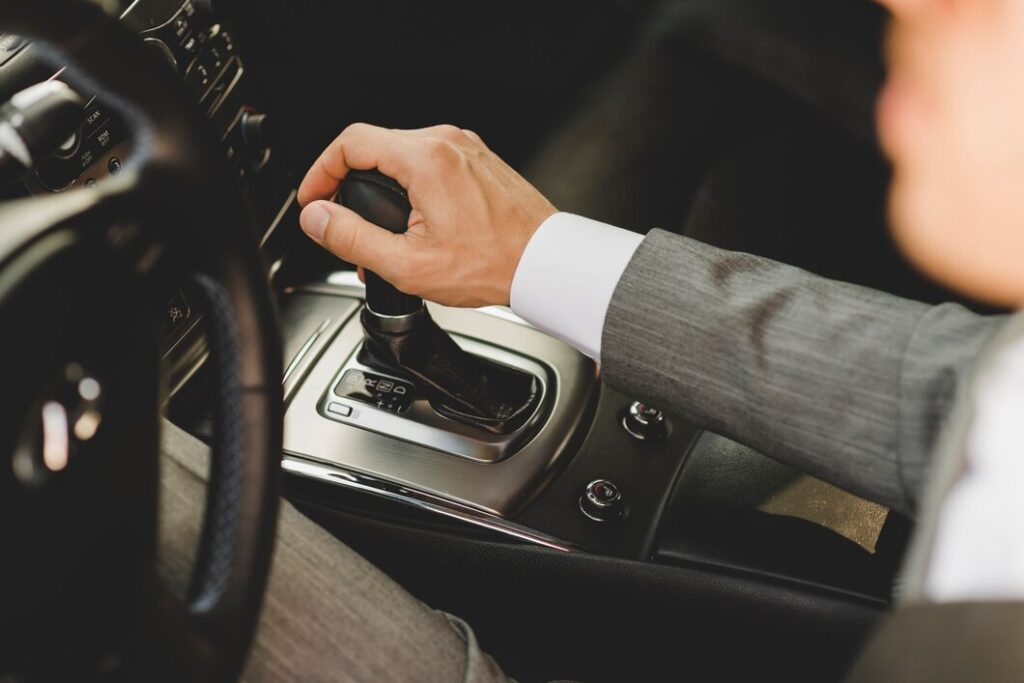
Changing gears smoothly and effectively is crucial for a comfortable and efficient driving experience in a manual car. This section will guide you through understanding the gear sequence, how to shift gears while driving, and the concept of rev-matching for smoother transitions.
Understanding the Gear Sequence
1. Gear Layout:
- Standard H-Pattern: Most manual cars follow an H-pattern gear layout, with the gears typically arranged as follows:
- 1st Gear: Upper left
- 2nd Gear: Lower left
- 3rd Gear: Upper middle
- 4th Gear: Lower middle
- 5th Gear: Upper right (if applicable)
- 6th Gear: Lower right (if applicable)
- Reverse Gear: Often located at the far right or far left, sometimes with a locking mechanism or collar to prevent accidental shifts
2. Gear Sequence Chart:
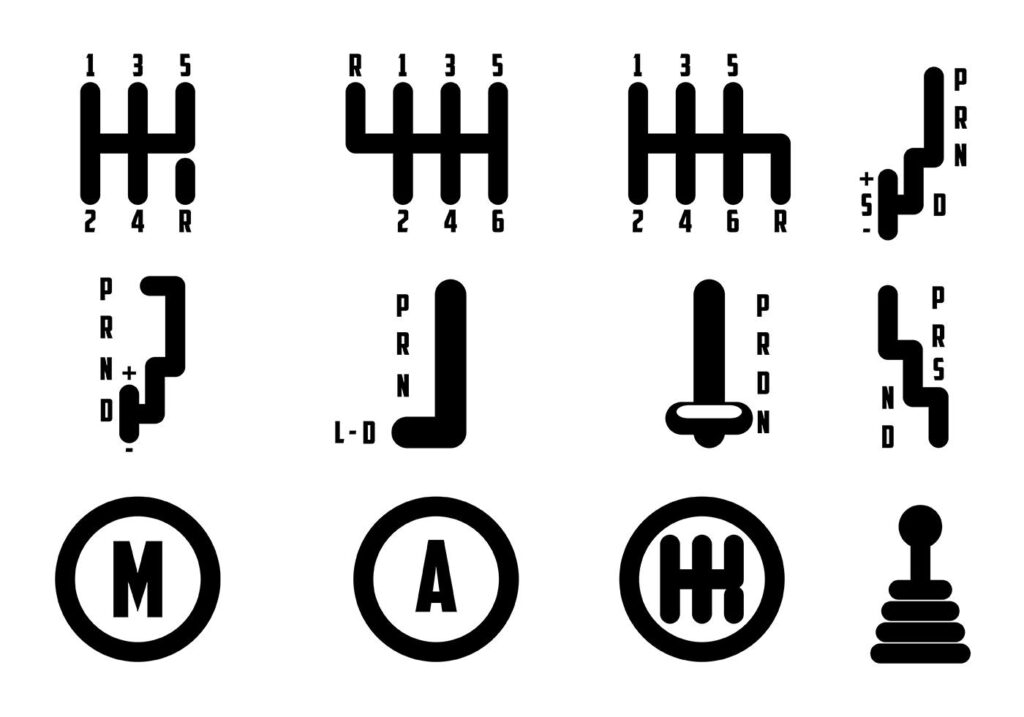
- Visual Aid: A gear sequence chart can help beginners understand the appropriate speeds for each gear:
- 1st Gear: 0–15 mph
- 2nd Gear: 15-25 mph
- 3rd Gear: 25-35 mph
- 4th Gear: 35-45 mph
- 5th Gear: 45-55 mph
- 6th Gear: 55+ mph
Shifting Gears While Driving
1. Basic Shifting Process:
- Press the Clutch Pedal: Fully depress the clutch pedal with your left foot to disengage the engine from the transmission.
- Move the Shifter: Move the shifter to the next gear position. For example, from 1st to 2nd gear, or 2nd to 3rd gear.
- Release the Clutch Pedal: Gradually release the clutch pedal while simultaneously pressing the accelerator pedal to match the engine speed with the road speed.
2. Smooth Transitions:
- Coordination: Smooth gear changes require precise coordination between the clutch and accelerator pedals.
- Avoid Jerking: Abrupt movements can cause the car to jerk. Practice gradual and smooth pedal transitions to avoid this.
3. Listening to the Engine:
- Engine Sound Cues: The engine’s sound can tell you when it’s time to shift. For example:
- Low RPMs: The engine sounds labored and may vibrate. This indicates it’s time to downshift.
- High RPMs: The engine sounds high-pitched and strained. This indicates it’s time to upshift.
- Typical RPM Ranges: Shift gears when the RPM gauge reaches about 2,500-3,000 RPMs for normal driving. For more aggressive driving, you might shift at higher RPMs, around 3,500-4,000.
Rev-Matching
1. What is Rev-Matching?
- Definition: Rev-matching is the technique of synchronizing the engine speed (RPMs) with the wheel speed to achieve smoother gear shifts, especially when downshifting.
- Why It Matters: This technique reduces wear on the transmission and provides a smoother driving experience.
2. How to Rev-Match:
- Steps:
- Downshifting: Press the clutch pedal and move the shifter to neutral.
- Blip the Throttle: Quickly press and release the accelerator pedal to increase engine RPM.
- Engage the Lower Gear: Move the shifter to the lower gear and smoothly release the clutch pedal.
Advanced Driving Techniques
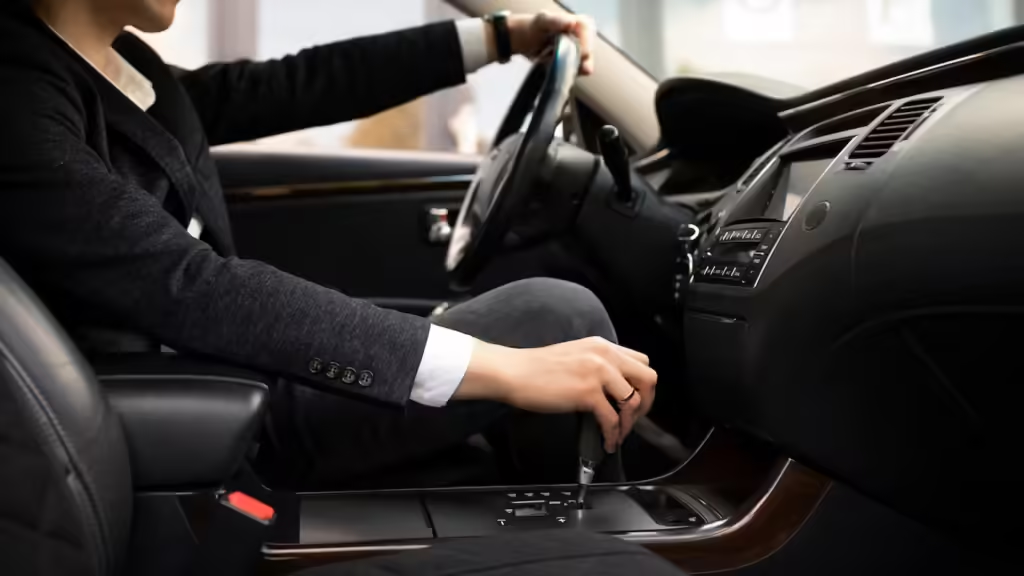
Once you’ve mastered the basics of driving a manual car, you may want to explore advanced driving techniques to enhance your control, performance, and overall driving experience. This section will cover techniques like heel-and-toe shifting and performance driving strategies, which are useful for more experienced drivers.
Heel-and-Toe Shifting
1. What is Heel-and-Toe Shifting?
- Definition: Heel-and-toe shifting is a technique used to smoothly downshift while braking. It involves using the heel and toe of the right foot to control both the brake and accelerator pedals simultaneously.
- Why It Matters: This technique allows for smoother downshifts and maintains engine speed, preventing shocks to the drivetrain and improving vehicle stability during cornering or deceleration.
2. How to Perform Heel-and-Toe Shifting:
- Steps:
- Approach the Corner: As you approach a corner where you need to downshift, position your foot so that the ball of your right foot presses the brake pedal.
- Press the Clutch Pedal: With your left foot, fully depress the clutch pedal to disengage the engine.
- Blip the Throttle: While maintaining pressure on the brake pedal with the ball of your foot, pivot your right heel (or side of your foot) to quickly press and release the accelerator pedal, increasing the engine RPMs.
- Shift to Lower Gear: Move the shifter to the lower gear while the engine RPMs are raised.
- Release the Clutch Pedal: Smoothly release the clutch pedal while maintaining braking pressure, allowing the lower gear to engage smoothly.
3. Practicing Heel-and-Toe Shifting:
- Start Slow: Begin practicing heel-and-toe shifting at low speeds and in a safe, controlled environment like an empty parking lot.
- Focus on Coordination: Concentrate on the coordination of your feet and the timing of the clutch, brake, and accelerator pedals.
- Gradual Progression: As you become more comfortable, gradually increase the speed and complexity of the maneuvers.
Common Mistakes and Tips

As a beginner, it’s common to make mistakes while learning to drive a manual car. This section will address some of the most frequent errors and provide practical tips to help you avoid them, ensuring a smoother and more enjoyable driving experience.
Common Mistakes
1. Stalling the Car:
- Why It Happens: Stalling usually occurs when the clutch is released too quickly or not enough gas is applied when starting or shifting gears.
- How to Avoid It:
- Practice Clutch Control: Get familiar with the clutch’s bite point by practicing slow releases in a safe area.
- Balance Gas and Clutch: Apply a bit of gas as you release the clutch to prevent the engine from stalling.
2. Riding the Clutch:
- Why It Happens: Riding the clutch involves keeping your foot on the clutch pedal while driving, leading to unnecessary wear.
- How to Avoid It:
- Use the Clutch Only When Necessary: Keep your foot off the clutch pedal unless you are shifting gears or coming to a complete stop.
- Rest Your Foot Elsewhere: Use the footrest provided in the car to avoid the temptation of resting your foot on the clutch pedal.
3. Coasting:
- Why It Happens: Coasting refers to driving with the clutch disengaged or the transmission in neutral, reducing control over the vehicle.
- How to Avoid It:
- Stay in Gear: Always keep the car in gear when driving. Use the appropriate gear for your speed and road conditions.
- Anticipate Stops: Downshift appropriately when slowing down instead of coasting to a stop.
4. Jerky Gear Shifts:
- Why It Happens: Jerky gear shifts often occur due to abrupt movements when releasing the clutch or changing gears.
- How to Avoid It:
- Smooth Movements: Practice making smooth, gradual movements with the clutch and gear lever.
- Synchronize Pedals: Coordinate the clutch and accelerator pedals for smooth transitions.
5. Incorrect Gear Selection:
- Why It Happens: Selecting the wrong gear can cause the car to struggle or over-rev.
- How to Avoid It:
- Know Your Gear Positions: Familiarize yourself with the gear layout of your car.
- Listen to the Engine: Use engine sound and RPMs as cues to select the appropriate gear.
Handling Specific Driving Situations
Driving a manual car in various situations can present unique challenges. This section will provide techniques and tips for handling common scenarios, such as driving on hills, in traffic, and parking, to ensure you feel confident and in control.
Driving on Hills
1. Hill Starts:
- Challenge: Prevent the car from rolling backward when starting on an incline.
- Technique:
- Using the Handbrake:
- Engage the handbrake to hold the car in place.
- Press the clutch pedal and shift to first gear.
- Gradually release the clutch until you reach the bite point.
- Simultaneously release the handbrake and apply the accelerator to move forward smoothly.
- Without the Handbrake:
- Press the brake pedal with your right foot.
- Press the clutch pedal and shift to first gear.
- Gradually release the clutch to the bite point while swiftly moving your right foot from the brake to the accelerator.
- Apply the accelerator gently to move forward.
- Using the Handbrake:
2. Downhill Driving:
- Challenge: Controlling speed while descending.
- Technique:
- Engine Braking: Shift to a lower gear to use engine braking and control speed without relying solely on the brakes.
- Controlled Braking: Use the brake pedal in short, controlled bursts to prevent overheating and fading.
Driving in Traffic
1. Stop-and-Go Traffic:
- Challenge: Frequent stopping and starting in heavy traffic.
- Technique:
- Stay in First Gear: In slow-moving traffic, it’s often best to stay in first gear.
- Clutch Control: Use the clutch pedal to control the car’s movement. Find the bite point and release slightly to inch forward.
- Avoid Excessive Shifting: Minimize gear changes by maintaining a steady speed and distance from the car ahead.
2. Smooth Acceleration and Deceleration:
- Challenge: Maintaining smooth acceleration and deceleration to avoid jerky movements.
- Technique:
- Gentle Throttle Input: Apply the accelerator smoothly to avoid sudden surges.
- Predictive Braking: Anticipate traffic flow and start braking early to stop smoothly.
Parking a Manual Car
1. Parallel Parking:
- Challenge: Maneuvering into a tight space while maintaining control of the clutch and brake.
- Technique:
- Positioning: Align your car next to the space, parallel with the car in front.
- Reverse Gear: Shift to reverse gear and use clutch control to move backward slowly.
- Steering: Turn the steering wheel to guide the car into the space, using the clutch to adjust speed.
2. Uphill Parking:
- Challenge: Preventing the car from rolling backward when parked on an incline.
- Technique:
- Facing Uphill: Turn the wheels away from the curb and engage the parking brake.
- Engage First Gear: Leave the car in first gear to add an extra layer of security.
3. Downhill Parking:
- Challenge: Ensuring the car remains stationary on a decline.
- Technique:
- Facing Downhill: Turn the wheels toward the curb and engage the parking brake.
- Engage Reverse Gear: Leave the car in reverse gear for additional security.
Advantages of Manual Transmissions
Driving a manual transmission car offers numerous benefits that enhance the driving experience, performance, and even economic aspects. This section will highlight the key advantages of manual transmissions, supported by relevant data and expert opinions.
1. Better Control
Enhanced Driver Engagement:
- Direct Connection: Manual transmissions provide a direct connection between the driver and the car, allowing for precise control over gear changes.
- Driving Experience: Many enthusiasts prefer manual cars for the tactile and interactive experience they offer, making driving more enjoyable.
Improved Handling:
- Gear Selection: Drivers can choose the exact gear they need, which is particularly beneficial in situations requiring precise handling, such as cornering or off-road driving.
- Engine Braking: Manual cars allow for better use of engine braking, which helps in controlling the car’s speed without excessive brake wear.
2. Fuel Efficiency
Efficiency Statistics:
- Fuel Economy: Manual transmissions can offer better fuel efficiency compared to automatics. According to studies, manual cars can be up to 5-15% more fuel-efficient in certain driving conditions.
Driver Influence:
- Optimized Gear Shifts: Skilled drivers can optimize fuel usage by shifting gears at the ideal RPMs, unlike automatics that may not always select the most fuel-efficient gear.
- Less Power Loss: Manuals typically have less parasitic power loss compared to automatics, contributing to better overall fuel efficiency.
3. Lower Maintenance Costs
Simplicity:
- Fewer Components: Manual transmissions have fewer components and are less complex than automatic transmissions, which can lead to lower maintenance and repair costs.
- Durability: With proper use, manual gearboxes and clutches can last a long time, often requiring less frequent repairs.
Cost Comparisons:
- Repair Costs: Repairing a manual transmission is generally cheaper than fixing an automatic transmission, which can be significantly more complex and expensive to repair.
4. Superior Performance
Acceleration and Power:
- Acceleration Control: Manual transmissions allow for better control over acceleration. Drivers can choose the optimal gear for maximum power output.
- Performance Driving: Manuals are preferred in performance driving scenarios, such as racing, where precise gear changes are crucial.
Weight Advantage:
- Lighter Weight: Manual transmissions are often lighter than automatics, which can improve the car’s power-to-weight ratio and handling.
5. Situational Advantages
Off-Road Driving:
- Traction Control: Manuals provide better control over traction, essential for off-road driving where precise power delivery is needed.
- Gear Selection: Drivers can select lower gears for steep inclines or rough terrain, offering better control and capability.
Winter Driving:
- Starting in Second Gear: Manuals allow drivers to start in second gear on slippery surfaces, reducing wheel spin and improving traction.
6. Economic Benefits
Initial Cost:
- Purchase Price: Manual cars are often cheaper to buy than their automatic counterparts, making them an attractive option for budget-conscious buyers.
Resale Value:
- Longevity: Well-maintained manual cars can retain their value longer due to their durability and the preference of certain buyers who seek out manuals.
Maintenance Tips for Manual Cars
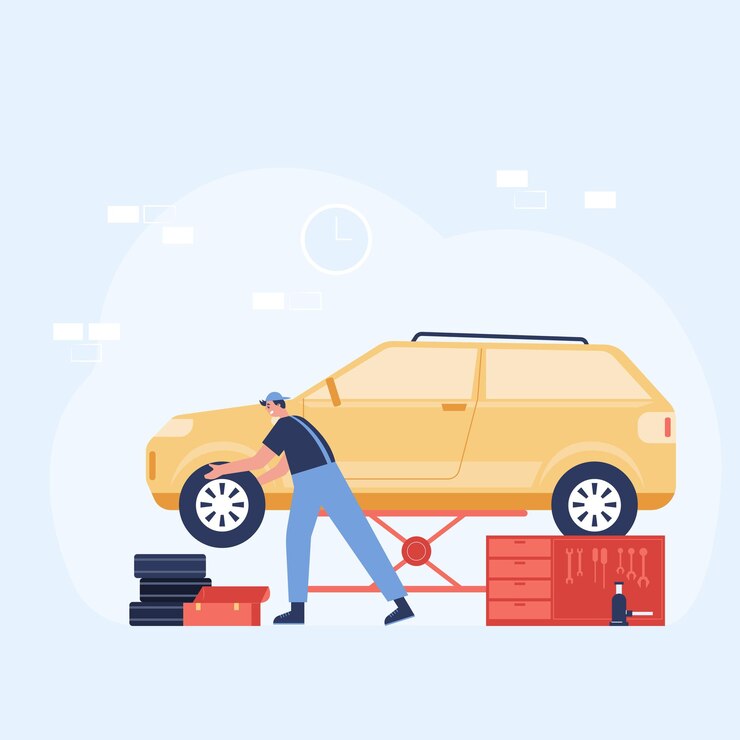
Proper maintenance is essential to keep your manual transmission car running smoothly and extend its lifespan. This section provides valuable tips for maintaining the clutch, gearbox, and other components of your manual car.
1. Clutch Care
Understanding Clutch Wear:
- Clutch Lifespan: The average clutch lifespan can range from 30,000 to 100,000 miles, depending on driving habits and conditions.
- Signs of Wear: Symptoms of a worn clutch include difficulty shifting gears, a spongy clutch pedal, and a burning smell.
Tips for Extending Clutch Life:
- Avoid Riding the Clutch: Keep your foot off the clutch pedal when not shifting. Riding the clutch leads to unnecessary wear.
- Smooth Engagement: Engage the clutch smoothly and avoid abrupt releases to prevent shock to the system.
- Minimize Clutch Use: In traffic, shift to neutral when stopped instead of holding the clutch pedal down for extended periods.
- Proper Use in Hills: Use the handbrake for hill starts to avoid clutch slippage and excessive wear.
2. Gearbox Maintenance
Understanding Gearbox Health:
- Gear Oil Importance: Gear oil lubricates and cools the gears, ensuring smooth operation and preventing wear.
- Signs of Gearbox Issues: Difficulty in shifting gears, grinding noises, or slipping out of gear can indicate gearbox problems.
Tips for Gearbox Maintenance:
- Regular Oil Changes: Change the gearbox oil according to the manufacturer’s recommendations, usually every 30,000 to 60,000 miles.
- Check for Leaks: Periodically inspect for oil leaks under the car, as low oil levels can lead to gearbox damage.
- Smooth Shifting: Avoid aggressive shifting and ensure the clutch is fully engaged before changing gears to reduce stress on the gearbox.
- Use the Correct Oil: Always use the manufacturer-recommended gear oil for your car.
3. Routine Inspections
Overall Vehicle Health:
- Regular Check-ups: Schedule regular inspections with a qualified mechanic to catch any issues early.
- Monitor Fluids: Keep an eye on all fluid levels, including brake fluid, engine oil, and gear oil.
Specific Inspections:
- Clutch Pedal Free Play: Ensure the clutch pedal has the correct amount of free play. Too much or too little can indicate adjustment is needed.
- Transmission Mounts: Inspect transmission mounts for wear or damage, as these can affect shifting and overall transmission health.
4. Driving Habits
Gentle Driving:
- Avoid Aggressive Driving: Hard acceleration, abrupt braking, and rapid gear changes can accelerate wear on the transmission components.
- Smooth Transitions: Practice smooth gear transitions and avoid over-revving the engine before shifting.
Proper Gear Usage:
- Appropriate Gears: Use the correct gear for your speed and load conditions to prevent undue stress on the transmission.
- Downshifting: Avoid excessive downshifting, which can cause wear on the clutch and gearbox. Instead, use engine braking judiciously.
5. Seasonal Considerations
Winter Driving:
- Cold Weather Care: Allow the car to warm up before driving in cold weather to ensure the transmission oil is adequately lubricating the gears.
- Traction Control: In snowy or icy conditions, use higher gears to improve traction and reduce wheel spin.
Summer Driving:
- Heat Management: In hot weather, ensure proper cooling of the engine and transmission to prevent overheating. Check coolant levels and radiator health.
6. Addressing Issues Promptly
Early Intervention:
- Respond to Symptoms: At the first sign of clutch or gearbox problems, seek professional diagnosis and repair. Ignoring symptoms can lead to more extensive and expensive repairs.
- Regular Maintenance: Follow the manufacturer’s maintenance schedule for all components, including the clutch and gearbox.
If you want in-depth maintenance tips for manual cars, leave a comment below. Your feedback and questions are valuable to us, and we’re here to help you get the most out of your driving experience.
Conclusion
Learning to drive a manual transmission car can be a rewarding experience that enhances your driving skills and provides a deeper connection to your vehicle. This guide has covered the essential aspects of manual driving, from understanding the basics to mastering advanced techniques.




